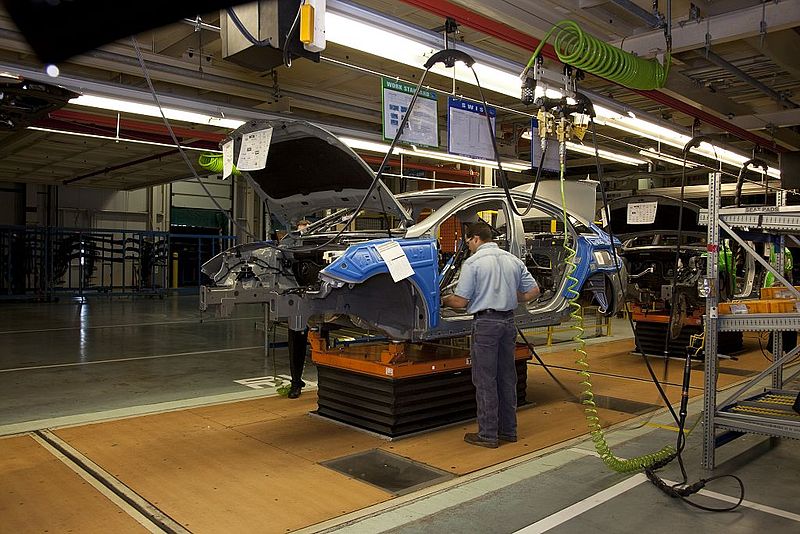How to Effectively Manage Facebook Reviews


There are several benefits to allowing Facebook reviews for your brand. Not only can you get more reviews and get rid of fake ones, but positive reviews can benefit your business. Below are some tips to help you manage your Facebook reviews and remove spammy content.
Positive Facebook reviews
Positive Facebook reviews are a great way to improve your business and gain more exposure. Potential customers read reviews online before making a purchase, and a positive Facebook review can help you increase your visibility and build trust with potential customers. After all, if a customer has a great experience, they’ll be more likely to buy from you again.
One of the most important things to do after a positive review is to respond. If the review is positive, you should thank the customer for their feedback and tell them how much it means. Likewise, if your Facebook reviews are negative, responding to the customer’s concerns is essential.
Facebook has a star rating system that encourages customers to rate businesses. This increases the visibility of your business on the site and allows readers to discover new businesses. The social network has a considerable following, and 74 percent of Americans use it to research local businesses. Facebook affects more than half of all purchase decisions. Moreover, 81 percent of people said that the recommendations of their friends directly influenced them. Positive Facebook reviews are also a great way to increase the credibility of a local business.
Another way that positive Facebook reviews can help your business is by increasing the number of 5-star reviews. Although this seems like a magic trick, there are a few simple steps that you can take to boost your 5-star reviews.
Get more Facebook reviews
There are a few ways to encourage customers to write a Facebook review. For one thing, you can ask customers to give you a review when they visit your business. You can also add a link to your website so customers can leave a review, or you can hang a sign in your store asking them to do so. The more reviews you receive, the better your chances of getting more customers to visit and buy from you.
Another way to ask customers to leave a review is to send them an email asking them to do so. The majority of customers will leave a review if they are asked. You can also send text messages asking people to leave a review. Depending on your business, this can be a great way to get more Facebook reviews.
Having more reviews for your business is essential because many people read reviews before making a purchase. Seventy-eight percent of consumers are likely to leave a review. Therefore, your brand must engage customers on Facebook and encourage them to do so. You can also moderate reviews, delete those that aren’t helpful, and encourage those who leave a positive review.
To get more Facebook reviews, you need to understand how Facebook rates businesses. Facebook recommends businesses based on the number of people who have left a review for your business. The number of reviews you receive will affect your overall rating, a mixture of past five-star rating systems, and the current Yes/No recommendations.
Remove fake Facebook reviews
If you are a business owner and you have noticed that you have numerous fake Facebook reviews, you may be wondering how to remove them from your business page. Luckily, you can take a few simple steps to take care of the issue. First, you should report the reviews to Facebook. Secondly, you should take note of any star ratings that are either without content or are low-rated. To deal with fake reviews, you must respond to any complaints as soon as possible.
Often, fake reviews are written by competitors, former employees, or real customers who have become angry. They are often exaggerated to make a business look bad. Facebook makes it easy for businesses to report these fake reviews. But, if there are too many fake reviews, it can negatively impact your business. Therefore, it is essential to respond promptly and professionally.
While many reviews on Facebook are harmless pranks pulled by online trolls, fake reviews significantly impact a company’s reputation. So, it’s essential to know how to remove fake Facebook reviews, so they don’t harm the business. Fake reviews are not only damaging to the business’s online reputation, but they can also deter potential customers. The best way to handle these negative reviews is to respond immediately and resolve the situation before it worsens.
Although fake reviews are more challenging to remove than you may think, you can still take steps to address the situation. First, you need to disable the review function on your page. Once you have done this, any negative reviews you’ve received will be hidden from your customers. It is important to remember that fake reviews are often detrimental to a brand’s reputation, so disabling reviews is a quick and effective way to eliminate them.
Methods to Protect Your Right to Vote


There are several ways to protect your right to vote. These include voting by mail, absentee ballots, and poll taxes. Disenfranchisement laws can negatively affect people of color, and poll taxes are an example of voter suppression. Absentee voting can help increase voter turnout, and All-mail elections guarantee that every registered voter will receive a ballot.
Encourage voter registration
Encouraging voter registration is a simple way to protect voting rights. In many states, nongovernmental organizations serve as voter registration agencies. Social workers, for example, can link clients to their local voter registration office and request a voter registration form. Many agencies also provide simultaneous voter registration services.
The Voting Rights Act has expanded voting rights and has played an essential role in increasing voter turnout and participation, particularly for people of color. This phenomenon is often viewed from a civil rights lens, but its economic effects are equally real.
Disenfranchisement laws affect people of color
Disenfranchisement laws are discriminatory laws that affect people of color when they vote. The laws have racist origins and mirror the growth of new legal codes that target African Americans with disproportionately high incarceration rates. Over the last 50 years, the number of people in prison has more than doubled compared to the overall population. As a result, black people are effectively locked out of the political process.
Some states have laws that disenfranchise people who have convictions for felony crimes. Florida, for example, excludes people convicted of homicide and sexual offenses. Alabama has a similar law that defines crimes of moral turpitude as crimes of a sexual nature. Many other states have similar laws.
Poll taxes
Voter ID laws are a modern form of poll taxes. These laws disguise their true nature as costs to working-class citizens and minorities. They are a current form of voter suppression that reverts to the old ways of American democracy. In addition to being a form of voter suppression, poll taxes discourage political participation.
In the past, poll taxes were collected by charging residents one to two dollars to cast their votes. This cost was prohibitive for low-income voters. Many Southern states adopted poll taxes during the Reconstruction period. The voter participation rate fell by 35 percent in presidential elections during this period.
Absentee voting
The effect of absentee voting may not be as apparent as one would think. While voter turnout in the states that adopted no-excuse absentee voting policies is higher than those that did not, it is difficult to determine whether it is an effect. Republicans are allegedly attempting to limit mail-in voting, according to a recent piece in the Wall Street Journal. However, Hall says that the debate over absentee voting should focus on something other than whether it helps one party or another.
In the 2010 elections, absentee voting increased voter turnout by nearly ten percentage points in Texas and five points in Indiana. In comparison, early in-person voting declined by 8.8 and 3.4 percentage points, and in-person voting on Election Day declined by only 1.85 percent. In addition, the effect of absentee voting on voter turnout was most significant among those who would have otherwise voted in person.
All-mail elections guarantee
The pandemic and coronavirus outbreak has made it nearly impossible for many states to keep up with increased voter turnout, and some are considering expanding vote-by-mail options. More states are turning to all-mail elections to make voting more convenient for citizens. In a recent meeting, state and county election officials discussed how they could implement mail-in voting, including timelines for implementation, staffing, facilities, vendors, and working with the U.S. Postal Service.
While all-mail elections have their benefits, they have their drawbacks. First of all, mail-in voting may need to be clarified. The process can be complicated by disinformation and legal challenges, eroding public confidence in elections. In Pennsylvania, for example, Republican lawmakers have attempted to ban mail-in voting, but the Pennsylvania Supreme Court ruled the law unconstitutional and, therefore, ineffective.
Prioritize voting in jails
There are many ways to help jail inmates exercise their right to vote. Many advocacy organizations have partnered with local jails and election officials to provide voter registration assistance and absentee ballots. In addition, prisons can help inmates register and vote by conducting outreach programs. In the 2018 election, Ballots Over Bars coordinated 30 volunteers in five counties to help inmates complete absentee ballot applications. Other organizations, such as All Voting is Local, registered inmates in three Ohio counties, while Northeast Ohio Voter Advocates registered jail residents and assisted them in voting.
One of the most compelling arguments for restoring voting rights to jail inmates is that it helps encourage reintegration into society and reduces recidivism. Research shows that individuals who feel appreciated in their community are less likely to commit crimes in the future. Inslee’s budget proposal will grant states $3 billion to implement voting rights programs and expand existing ones. However, some Republican legislators are skeptical of restoring prisoners’ voting rights.
A Comprehensive Guide to Choosing a Streaming Service


Streaming services allow users to watch and listen to media files without downloading them to their computers. The process will enable them to experience an ongoing event in real time and offers an uninterrupted viewing experience. However, the process can be costly. Here are some things to keep in mind when choosing a streaming service.
It is a method of viewing or listening to media files without downloading them.
Streaming allows users to watch, listen to or play content on a computer or mobile device without having to download the file first. It is a popular way to enjoy the video, audio, and game content online. By receiving the data from the start of the movie or game, computers or mobile devices can begin playing the content immediately.
The streaming process is faster than downloading the media file itself. A strong signal and uninterrupted playback are required to view or listen to a streaming movie or audio file. It is crucial to search streaming services that will break up the content into smaller data packets and send them to the device’s audio player. Once enough of these packets arrive at the browser, it will begin playing the file.
It allows users to experience an ongoing event in real-time.
A streaming service is a multimedia content delivery network that enables users to experience an ongoing event in real-time. The content is delivered in small data packets so that it does not need to be downloaded. The service typically requires some form of payment. However, many streaming services are free. It would help if you had a high-speed internet connection and a streaming device to access these services.
Live streaming is also a good option for businesses and brands to increase viewer engagement. In addition to generating brand awareness, it can also increase engagement with the event. For example, speakers and personal brands can reach a large audience in real time. It also allows them to gain valuable insight into the demographics of their audience, allowing them to create customized events based on their preferences.
It allows users to enjoy a seamless viewing experience.
Streaming services are software applications that let you enjoy media in continuous loops without downloading the entire file. Instead, the content is transmitted in small data packets and stored on the user’s device to be played remotely. The concept has been around since the 90s but caught on after the invention of the iPhone and the rise of Flash.
Streaming services have a huge opportunity to provide consumers with an entirely new way to consume content. They can serve personalized ads based on the user’s behavior and preferences. However, to maintain subscribers, they need to meet the demands of the growing number of consumers and differentiate their services.
It can be dangerous for artists.
Artists are worried that streaming services may not be paying them royalties. However, it’s not entirely their fault. The streaming services are paying royalties based on agreements with labels and distributors. These royalties come from subscriptions and ad money. Artists have to fight for their royalties.
Additionally vulnerable to the scam are streaming services. These phony albums frequently consist of material that has been leaked or someone posing as an artist. Identity theft has also occurred in some instances.
Streaming services can be good for fans, but they can be harmful to artists. The first problem with streaming is that the payout rates for artists are so low. While streaming sites make billions of dollars, they can’t pay musicians as much as they would like.
Importance of Popular Gaming Influencers in Your Gaming Business


Working with gaming influencers is essential for several reasons. In the United States alone, over 150 million people are gamers. The majority of gamers are between 18 and 34. These influencers can help you reach this audience.
Work with traditional influencers
There are many benefits to working with popular gaming influencers. First, it’s essential to know the type of content they post. They also tend to post content regularly and have a devoted gaming audience.
Finally, you’ll want to find out if they’ve had any recent successes with a brand.
Secondly, the gaming market comprises people of different backgrounds, ages, and interests.
For example, while the average gamer may be male and 35-44, large numbers of female gamers account for nearly half of the industry, which means that your influencer strategy needs to reflect the nuances of your audience.
Third, gaming influencers can be a massive asset to your gaming business. They can amplify your announcements, showcase finished games, and provide valuable early-stage feedback. In addition, they can act as long-term brand ambassadors and serve as consultants for your gaming business.
Importance of working with gaming influencers
Working with gaming influencers can effectively increase brand awareness and engage a gaming audience. It can also help you market products outside the gaming industry. The gaming industry is full of real people who are passionate about gaming. It’s essential to find the right fit among thousands of creators. While in-house research can be challenging, working with an agency that works with gaming influencers can be beneficial.
Influencers in the gaming industry are becoming increasingly important to brand visibility. Influencers can help maximize a brand’s exposure, attracting millions of new gamers. Major brands are already using influencer marketing to piggyback on the popularity of social media stars. Incorporating influencers into your marketing strategy will help your business reach a larger audience and boost sales.
The gaming influencer industry is thriving, with new ways to work with creators. In addition, modern platforms offer brand possibilities never seen before. Of course, there are differences between working with gaming influencers and traditional advertising, but both have the same goal: to showcase a product, service, or brand to a gaming audience. For example, a collaboration between Fortnite and Travis Scott resulted in 12.3 million players watching a nine-minute live show.
Work on other platforms
Working with gaming influencers can help your gaming business reach a broader audience. These influencers have loyal followers and are highly engaged with their audiences. Their engagement with your product or service can translate into an organic promotion and brand evangelicalism. These are just some benefits of working with influencers in your gaming business.
To find the best influencers, know the preferences of your target audience. For example, women prefer strategy, puzzle, and simulation games, while men will likely choose tactical shooter games. Whether you want to work with influencers in the gaming industry or other platforms, make sure you find one who appeals to your target audience. And be sure to work together in the long run.
Influencers have enormous reach on social media. They can help you reach your social media and marketing goals, ranging from building brand awareness to generating leads and increasing sales.
What to Prepare When Applying for a Visa


There are several things you should do to ensure a successful application. These include ensuring that your passport will not expire soon, submitting all your documents in an organized manner, and providing an interview checklist. The checklist is a way for you to ensure that everything you submit is complete, as not every embassy requires a personal interview. Other embassy procedures may vary, so be sure to read the specific instructions before you apply.
Taking Photocopies Of Official Documents
When applying for a visa, visit sites like iVisa for more information about your official documents. You will need these documents to prove your identity. Your birth certificate and marriage certificate are two examples. These documents must be valid and not expired or banned. However, you should never make a color copy of a paper unless you are a notary.
You can have your photocopies certified at the Embassy, Consulate General, Notary Public, or Honorary Consulate.
Having An Immigration Attorney To Review Your Application
Having an immigration attorney review your application when submitting for a Visa can ensure that everything is in order and your application is properly documented. If there are any discrepancies in your application, an attorney can clarify the situation and resolve them most effectively. The application process is a crucial step in your life, and mistakes can have devastating consequences. For example, sometimes, a single mistake can lead to a three or 10-year ban on your application. You should also ensure your attorney has a track record of success in this area. It is not uncommon for immigration attorneys to make mistakes that hurt your case. If you suspect a mistake has been made, you should seek the assistance of a qualified immigration attorney right away. Your immigration attorney can investigate your case for errors and mistakes and check whether the attorney who prepared your documents is licensed to practice law.
Hiring an immigration attorney can significantly improve your chances of approval. Since immigration law is complex, small mistakes can lead to significant problems, costing you more money and potentially separating you from your family. Plus, immigration policy changes frequently. Even those with experience often have a hard time navigating the system.
Having A Quick And Efficient Interview
When applying for a Visa, preparation is essential. You must be prepared to answer all of the questions, and you must have all of the required documents with you. Also, you must dress appropriately and show a positive attitude. Your overall perspective should reflect that you want to obtain the Visa and are confident about your abilities. Organizing your documents is also essential. Using a file folder that expands will allow you to label and sort them before the interview. The notice you receive for your interview will contain a general list of documents required. Make sure you bring all the original copies of these documents. Make sure that you gather all of the necessary documents and that you dress appropriately for the interview. You should also consider what you’ll be asked at your consultation and practice your answers with a family member or friend.
Expressing Ties To Your Home Country
When applying for a Visa, you must express your ties to your home country. Strong ties to your home country can range from a job to a family or even a bank account. Your connections are vital whether you’ve been in the country for a long time or just recently moved. Depending on the country you’re applying for, these ties can affect your application’s approval. For example, if you’re applying for a temporary residence Visa, you’ll need to show that you will return to your home country or have friends or family in the country where you’re applying.








